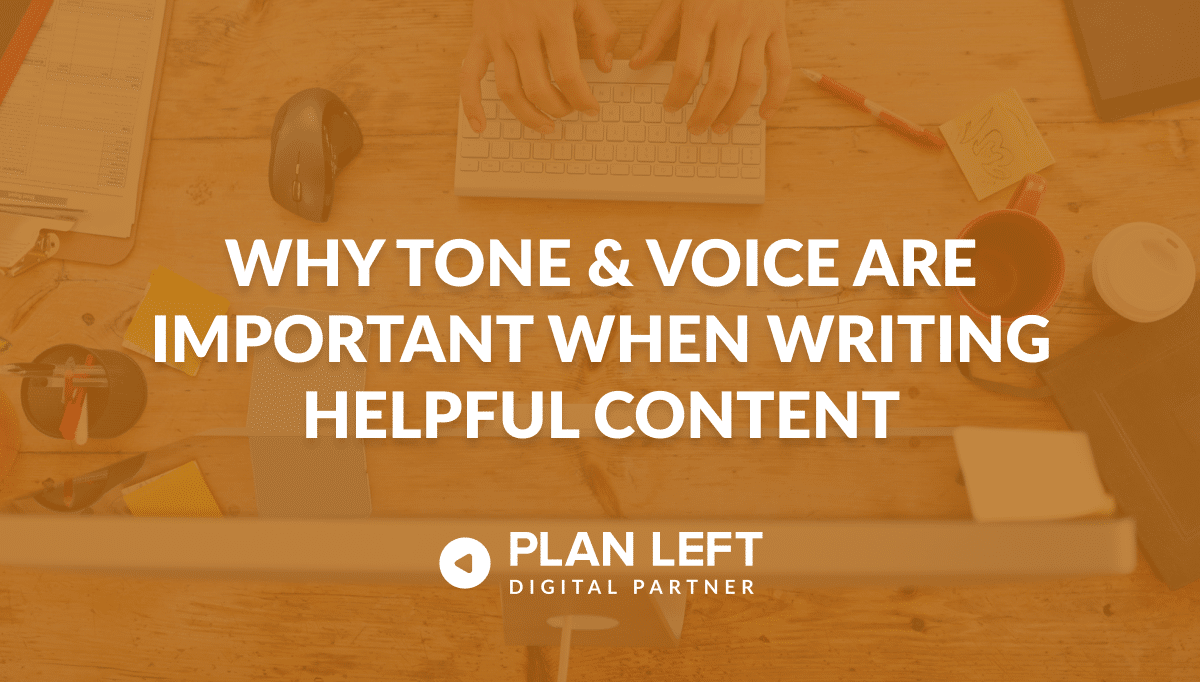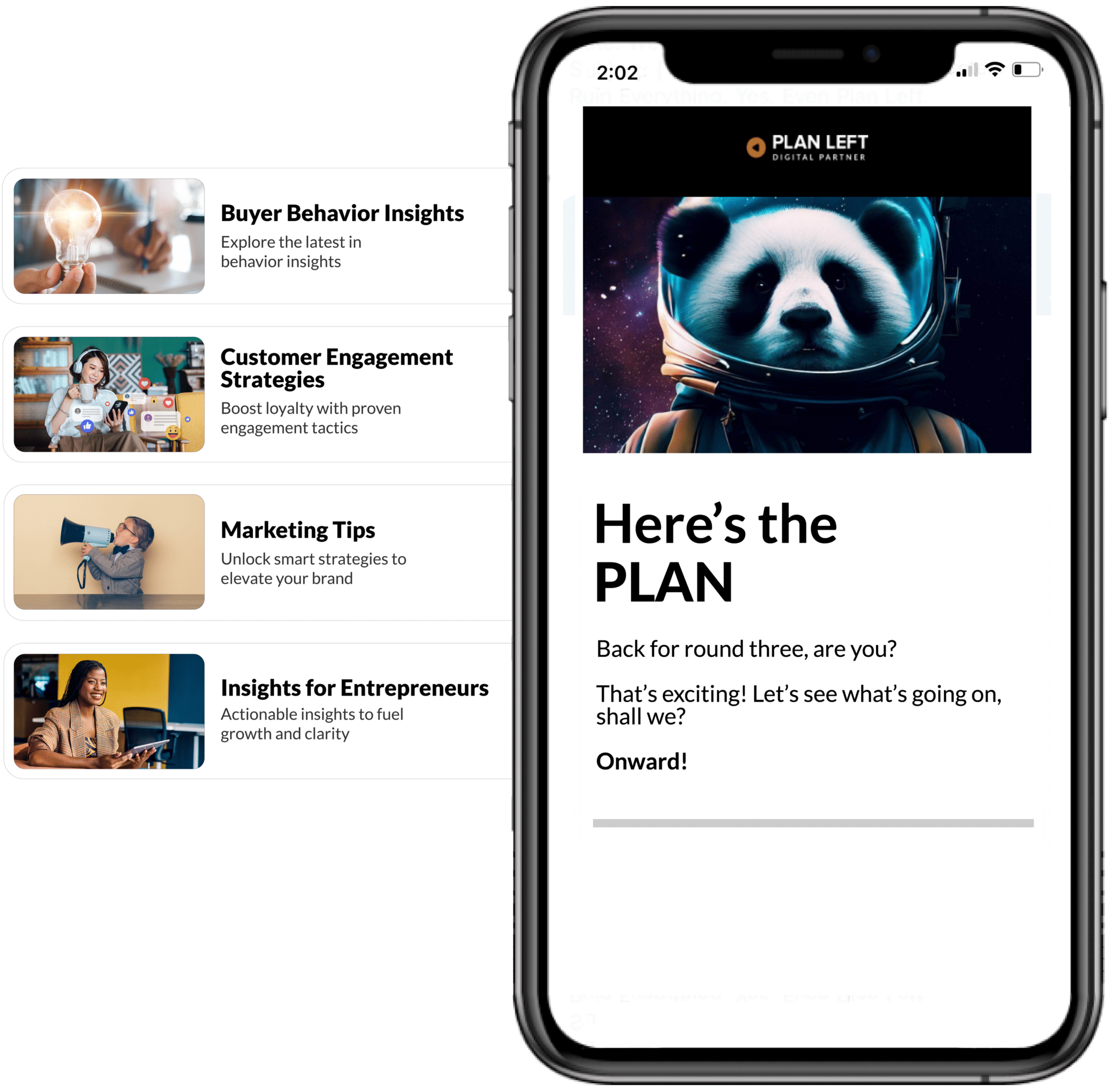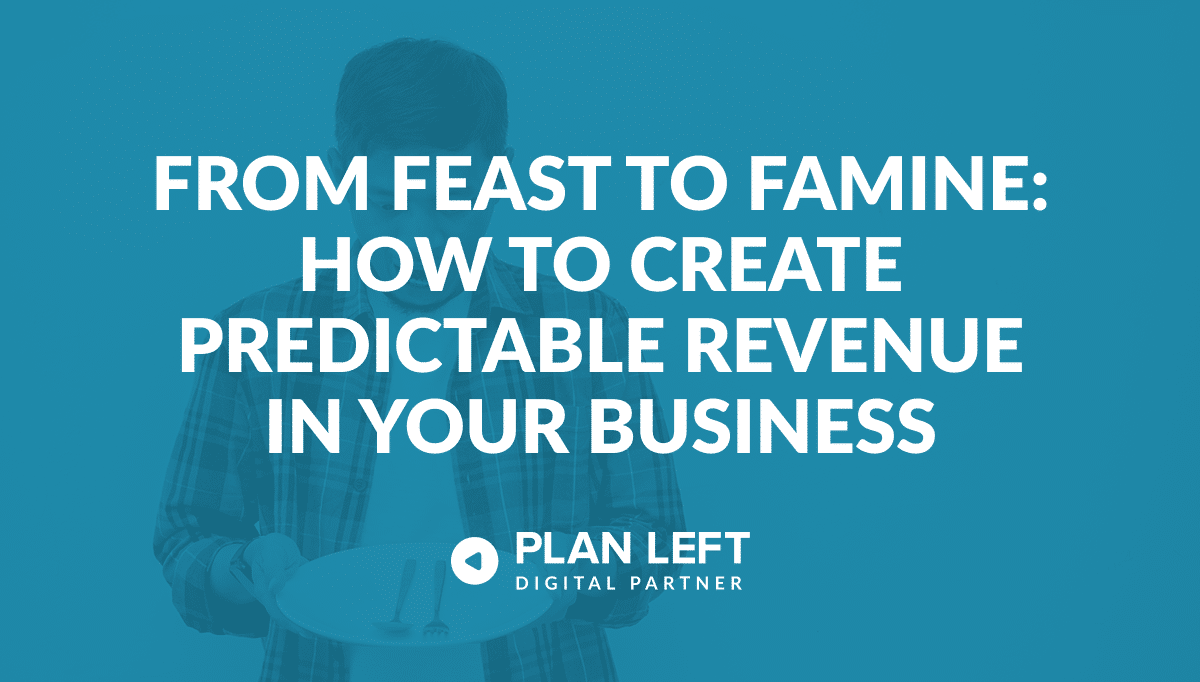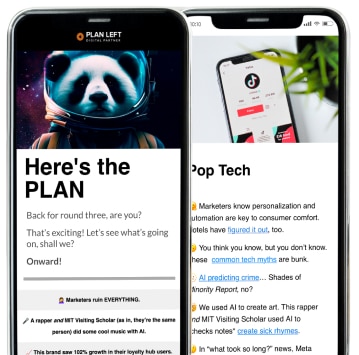
Preparing content for long-term success requires a fundamental understanding of where things started and where they are going. For example, overloading your content with terms you wanted to rank for became a black hat SEO practice with the Panda update in 2011. Then, the intent of content first took center stage after the Hummingbird update in 2013. Now, with the latest round of Google Core and Spam updates, we see brand voice and helpfulness of content at the forefront.
Know the Difference Between Brand Tone vs. Voice
Owning a consistent brand tone and voice builds trust with our audience and also builds familiarity with our buyers. Through our writing, our buyers get to know who we are. We want to remember that we’re building a relationship with our buyers through the content on our web pages.
Although they are sometimes used interchangeably, brand tone and voice are quite different:
- Brand Voice
- The personality, values, and characteristics that define what makes our brand unique and reflects our brand’s ethos.
- Brand Tone
- Specific attitude or emotional inflection conveyed in writing and may vary depending on the context or purpose of our message.
Conversational Writing Builds Relationships
Talk with your audience, not at them. Imagine you’re at a lunch meeting, having a conversation. Would you use a bunch of fancy terms, speaking formally and like you’re on autopilot? Or would you use terms you know the person you’re with understands—more casual and personable?
If your buyers are with the 40+ year old business crowd, you may not want to use ‘rizz is on fleek.’ Instead, go for something like ‘a very attractive offer.’ It’s all about hitting the right note with your specific crowd.
And don’t forget to tackle the questions that matter to your target audience. If you’re in the food and beverage industry, stay with industry-specific topics like up-and-coming automation tools, not what the most purchased plungers in restaurants are.
Use Appropriate Language for The Reader
The language you use will vary depending on the demographics you’re targeting, but how you engage your buyers and employ your brand voice and tone will set the precedence for how your conversations are expected to go beyond the content on your website.
We have 10 to 20 seconds to make a connection before the buyer leaves our website to go to another. Think of websites as our storefronts and the content as our showroom. How we present it will determine whether our buyers invest in what we are selling or choose a competitor.
Write how you engage in person and follow these tips:
- Engage the reader in the conversation by using terms that include them like ‘we’ or ‘our’ when possible.
- Keep it honest and straightforward. You have a limited amount of time before you lose the buyer’s focus; don’t waste it.
- Keep the language at an appropriate reading level. If industry-specific terms or abbreviations are used, clarify them so that all readers understand the content and no one feels left out. Negative feelings are never good, especially when we might be the ones creating them.
If our audience finds our content helpful and we follow search algorithm best practices, then the content will rank—even when faced with algorithm updates. The most important person to search algorithms like Google will always be the user.
Explore Latest Posts
5 Signs Your Business Is Ready to Own Its Marketing (Without an Agency) The default assumption in business is that ... read more
December 31, 2025
From Feast to Famine: How to Create Predictable Revenue in Your Business Three months ago, you couldn't take on another ... read more
December 29, 2025
Why Competing on Price Is Killing Your Margins (And What to Do Instead) When a prospect asks "how much do ... read more
December 25, 2025
Essential Strategies for Entrepreneurs
Get Actionable Business Insights & Marketing Tips
Our newsletter delivers real-world strategies from entrepreneurs who’ve been exactly where you are.
Sign up now for:
- Actionable growth strategies that work
- Insider tactics for attracting top talent
- Real-world case studies from successful founders
- Emerging tech trends that drive innovation
- Pragmatic marketing approaches for visionary leaders




